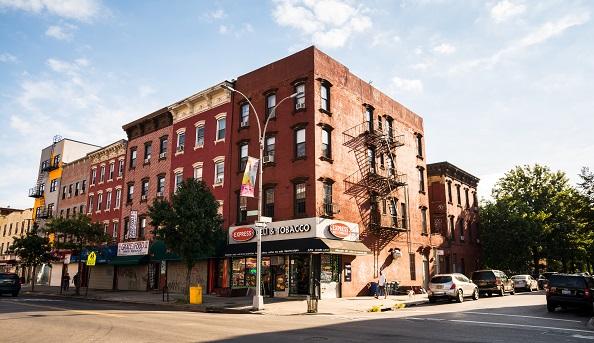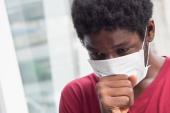Social Determinants of Health Tied to Fewer COVID-19 Precautions in CVD Patients
Work flexibility and other means of reducing exposure were harder to come by for those with social determinants of health.

Patients with cardiovascular disease who are under added strain due to sociodemographic factors, such as financial instability and food insecurity, are less likely to take steps to protect themselves from COVID-19 and less able to avoid situations, like crowded work or living spaces, that carry the risk of exposure to SARS-CoV-2.
The results, from a survey of US adults during the pandemic’s first wave, are set to be presented at the virtual American College of Cardiology (ACC) 2021 Scientific Session later this month and are now published in Circulation: Cardiovascular Quality and Outcomes.

Prior studies have shown that social determinants of health (SDOH) have an additive effect on cardiovascular health, a risk that persists even when accounting for more-traditional markers like comorbidities and smoking. And COVID-19 has further illuminated the consequences of health disparities, with its disproportionate impact on minorities.
During the pandemic, specialists in the area of SDOH have “noticed that practices of COVID-19 mitigation measures like social distancing tended to be a privilege for people with less social adversity,” lead author Kobina Hagan, MBChB (Houston Methodist Research Institute, TX), said in a press conference prior to ACC 2021. Patients with cardiovascular disease are known to be at risk of severe outcomes with COVID-19, but there hadn’t yet been any studies to look at how SDOH might be affecting their safety precautions against the viral disease.
The findings of this study, said Hagan, suggest the need for more attention to SDOH in the context of COVID-19. “Identifying and prioritizing individuals whose medical vulnerability is compounded by social adversity may help bridge existing disparities in COVID-19 burden,” he noted, adding, “We also believe that the disparities that we saw actually segue into the vaccination coverage and equity,” where SDOH can limit access to COVID-19 vaccines.
Personal Protection, Social Distancing, Work Flexibility
Hagan et al used the National Opinion Research Center’s COVID-19 Household Impact Survey to gather a sample of 25,269 US adults across 18 regional areas between April and June 2020. Among them, 2,036 (7%) reported having a history of heart disease, heart attack, or stroke, which would represent 8.69 million people in the survey’s overall data set. Participants with CVD tended to be age 60 or older (68%), male (54%), non-Hispanic white (67%), and insured (96%).
The researchers developed an index to gauge SDOH risk incorporating education, insurance, household income, food security, population density, and neighborhood quality (ie, sense of community).
Patients in the highest versus lowest quartile of SDOH risk were less likely to use all methods of personal protection (mask, hand hygiene, physical distancing) and social distancing (avoidance of crowds, restaurants, social activities, and high-risk contact). They also had less work flexibility (ability to work from home or cancel/postpone work). These differences were significant after adjusting for potential confounders, age, sex, race/ethnicity, comorbidity burden, and survey timing, such that the patients with highest SDOH risk were a relative 17% less likely to use personal protection, 31% less likely to socially distance, and 47% less likely to have work flexibility.
Use of COVID-19 Mitigation by SDOH Level
|
|
1st Quartile |
4th Quartile |
|
Personal Protection |
89.0% |
75.6% |
|
Social Distancing |
58.9% |
41.9% |
|
Work Flexibility |
41.4% |
26.2% |
“Prioritizing socially disadvantaged populations in public health policies and programs, such as health messaging and vaccination delivery, may help reduce existing disparities in COVID-19 infection risk and outcomes, which continue to affect high-risk populations disproportionately,” the investigators conclude.
To the media, Hagan said that “healthcare systems should have a more-intimate integration of social services into their clinical care, and we believe that as COVID hopefully wanes there are people who still are going to suffer postacute complications or lingering effects of COVID-19.” They’re also the people who might have missed their regular visits to the cardiologists due to the pandemic and need targeted care, he pointed out.
Eugene Yang, MD (UW Medicine, Bellevue, WA), the press conference moderator, suggested it would be interesting to see how these SDOH-related differences in mitigation use are linked to this population’s likelihood of contracting COVID-19 or experiencing a cardiovascular event. “I think this is a great stepping stone for additional work,” he said.
Caitlin E. Cox is News Editor of TCTMD and Associate Director, Editorial Content at the Cardiovascular Research Foundation. She produces the…
Read Full BioSources
Hagan KK, Javed Z, Cainzos-Achirica M, et al. Social determinants of adherence to COVID-19 risk mitigation measures among adults with cardiovascular disease. Circ Cardiovasc Qual Outcomes. 2021;Epub ahead of print.
Disclosures
- Hagan reports no relevant conflicts of interest.





Comments